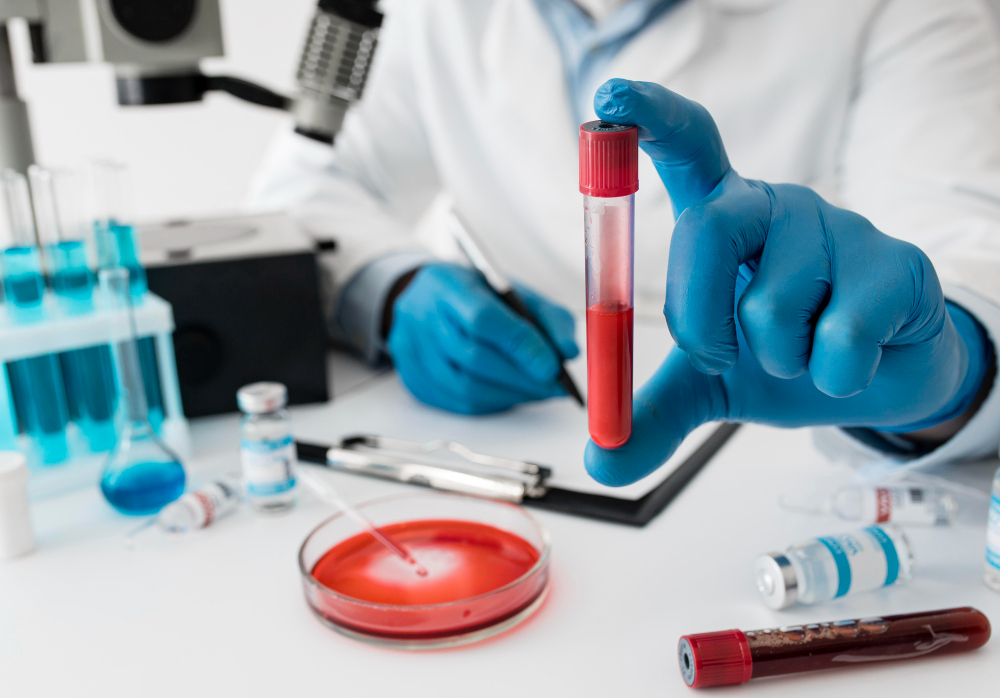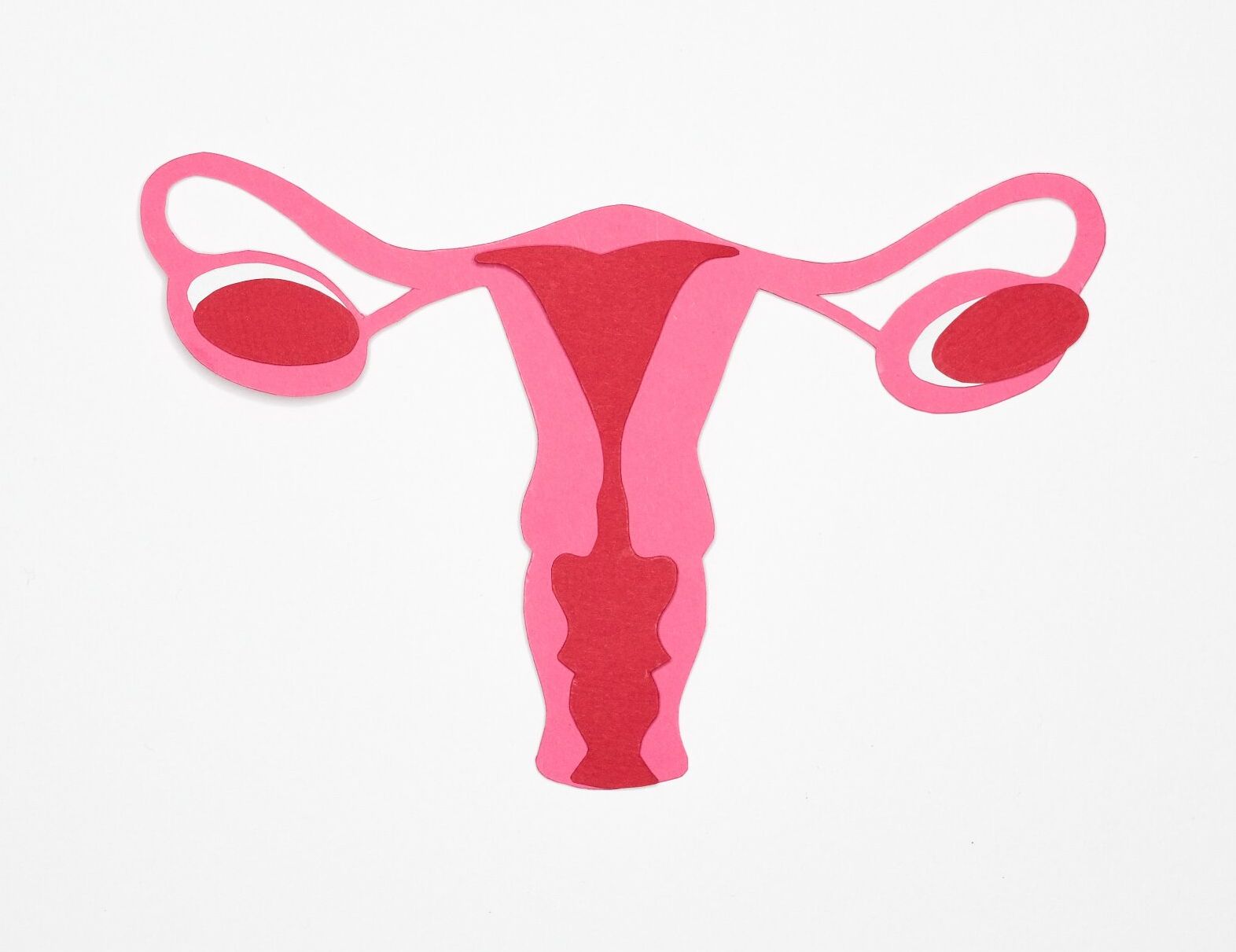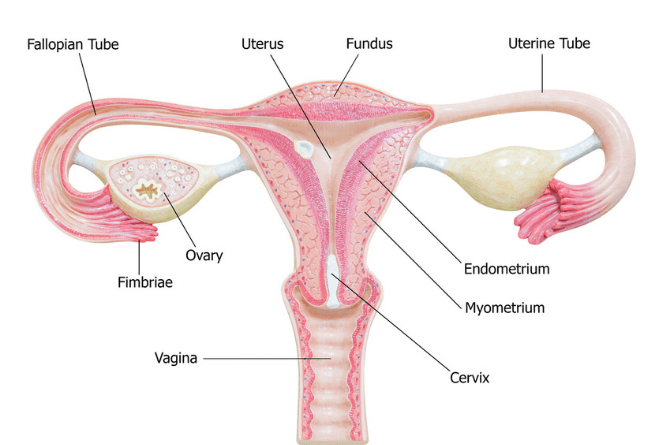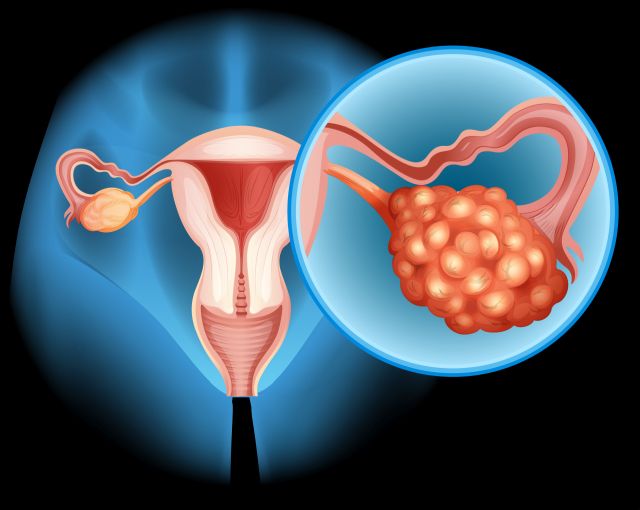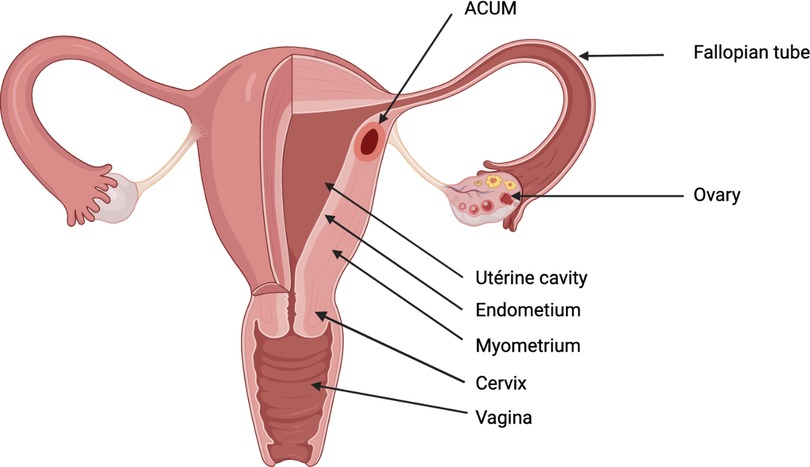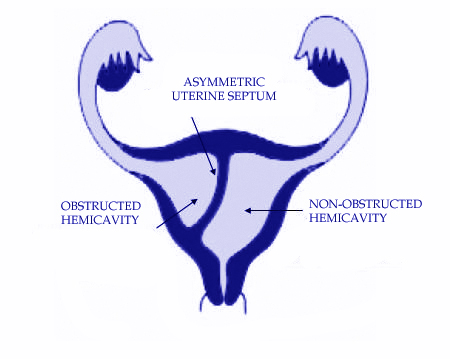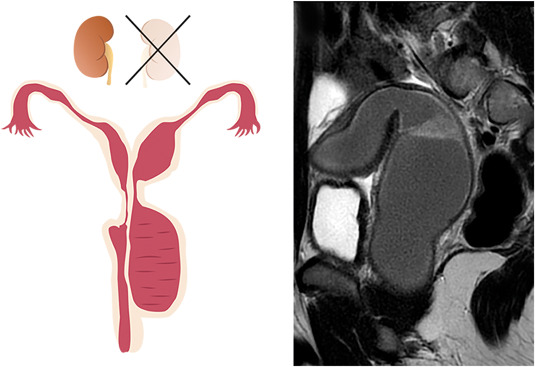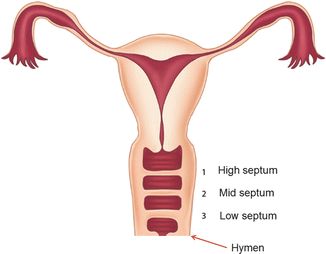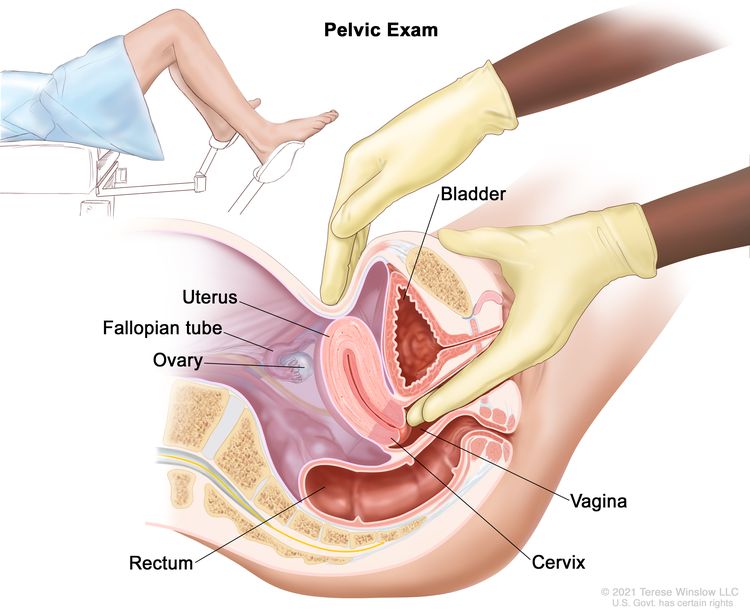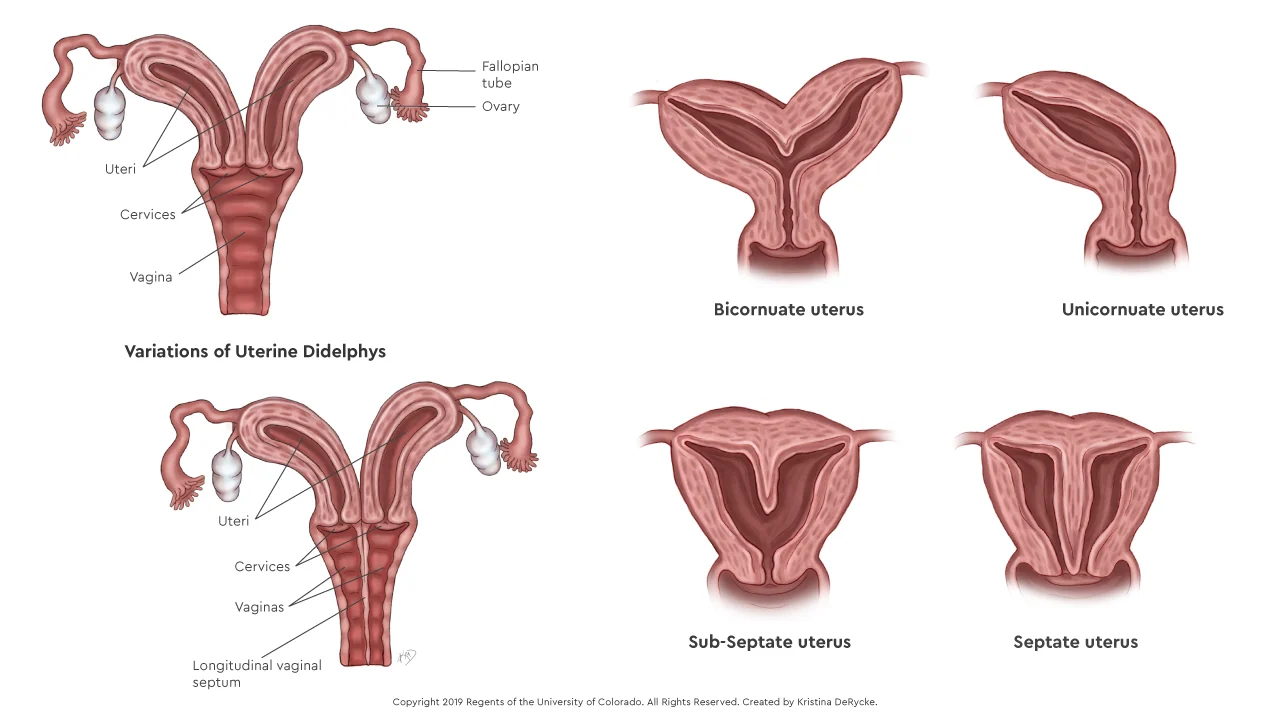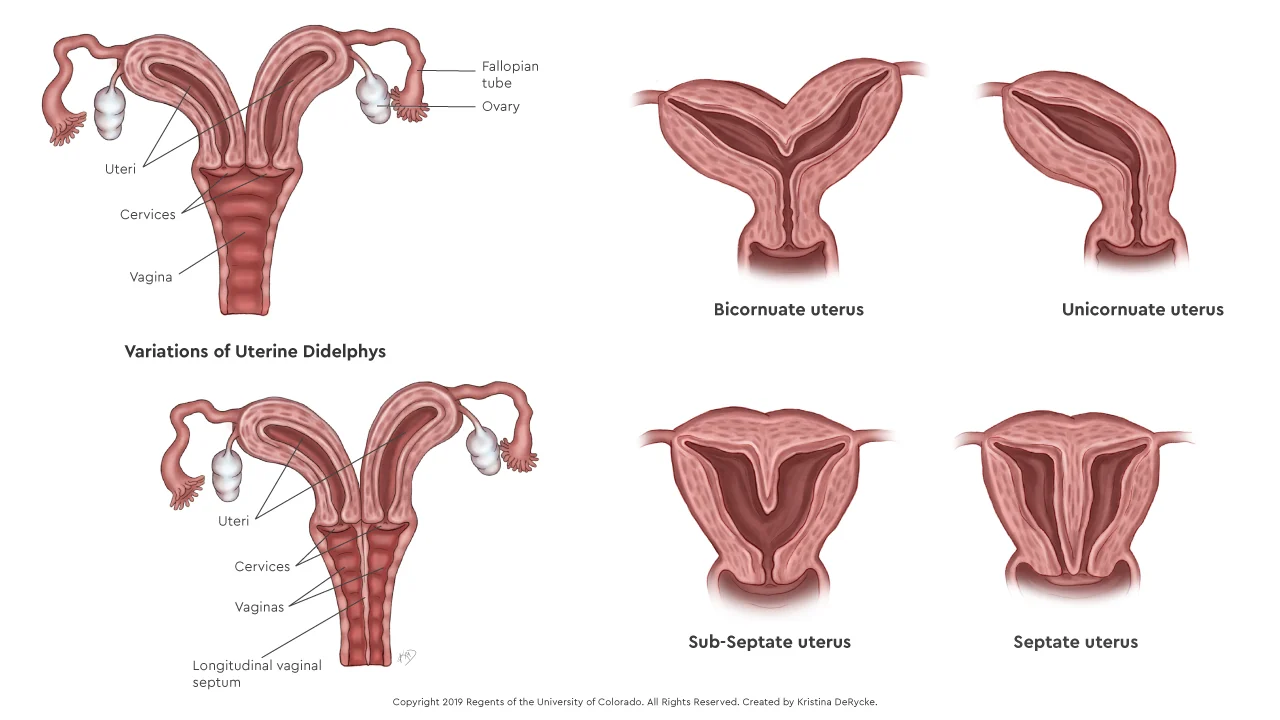
What is a Congenital Uterus Development Anomaly (Mullerian Anomaly)?
A congenital uterus development anomaly, also known as a Mullerian anomaly, refers to a structural abnormality or malformation of the female reproductive organs that occurs during fetal development. These anomalies may involve the uterus, fallopian tubes, cervix, or vagina and can vary in severity from minor to significant. Mullerian anomalies can affect reproductive health, fertility, and pregnancy outcomes.
What are the types of Mullerian Anomalies?
There are various types of Mullerian anomalies, including septate uterus, unicornuate uterus, bicornuate uterus, didelphys uterus, and vaginal septum. A septate uterus is characterized by a septum or wall dividing the uterus into two separate cavities. A unicornuate uterus is a single-horned uterus with only one fallopian tube. A bicornuate uterus has a heart-shaped appearance with a partial or complete division of the uterus. Didelphys uterus consists of two separate uterine cavities, each with its own cervix. Vaginal septum involves a partition or obstruction within the vagina.
What are the symptoms of Mullerian Anomalies?
The symptoms of Mullerian anomalies vary depending on the type and severity of the anomaly. Some women with minor anomalies may not experience any symptoms, while others may present with symptoms such as abnormal menstrual bleeding, pelvic pain, recurrent miscarriages, infertility, or difficulty conceiving. Mullerian anomalies can also increase the risk of complications during pregnancy, such as preterm birth, breech presentation, or cesarean delivery.
How are Mullerian Anomalies diagnosed?
Mullerian anomalies are typically diagnosed through a combination of medical history, physical examination, and imaging studies such as ultrasound, magnetic resonance imaging (MRI), or hysterosalpingography (HSG). These tests help visualize the internal structures of the reproductive organs and identify any abnormalities or malformations. In some cases, additional diagnostic procedures such as laparoscopy or hysteroscopy may be recommended to further evaluate the extent of the anomaly.
What are the treatment options for Mullerian Anomalies?
The treatment approach for Mullerian anomalies depends on the type and severity of the anomaly, as well as the individual's reproductive goals and symptoms. In some cases, conservative management may be recommended to address symptoms such as abnormal bleeding or pelvic pain. Surgical intervention may be necessary to correct structural abnormalities that affect reproductive health, fertility, or pregnancy outcomes. Surgical procedures such as hysteroscopic septum resection, metroplasty, or vaginoplasty may be performed to improve fertility and pregnancy outcomes.
What are the procedure after surgery?
Rest and Limit Activity : Avoid strenuous activities, heavy lifting, and vigorous exercise for the recommended period.
Keep the Area Clean : Gently clean the surgical area with water and mild soap as directed by your surgeon. Pat the area dry with a clean towel, and avoid rubbing or scrubbing.
Take Prescribed Medications : Take any prescribed pain medications, antibiotics, or other medications as instructed by your surgeon to manage pain and prevent infection.
Avoid Sexual Activity : Refrain from sexual intercourse and other sexual activities until your surgeon advises it is safe to do so. This typically takes several weeks to a month or more, depending on individual healing.
Wear Loose Clothing : Wear loose-fitting clothing, preferably cotton underwear, to minimize friction and promote airflow to the surgical area.
Attend Follow-Up Appointments : Keep all scheduled follow-up appointments with your surgeon to monitor your healing progress and address any concerns or complications promptly.
Avoid Tampons and Menstrual Cups : Refrain from using tampons and menstrual cups during your recovery period to prevent irritation and infection.
Stay Hydrated and Eat Nutritious Foods : Drink plenty of water and eat a balanced diet rich in vitamins and nutrients to support healing and boost your immune system.
Why choose VMG Hospital for the treatment of Mullerian Anomalies?
VMG Hospital in Hisar, Haryana, is a trusted provider of comprehensive gynecological and reproductive health care for women with Mullerian anomalies. Our team of skilled gynecologists, reproductive endocrinologists, and fertility specialists has extensive experience in diagnosing and treating Mullerian anomalies, ensuring personalized care and treatment tailored to individual needs. With state-of-the-art facilities and a patient-centered approach, VMG Hospital is committed to delivering compassionate care and helping women overcome the challenges associated with Mullerian anomalies to achieve their reproductive goals.
